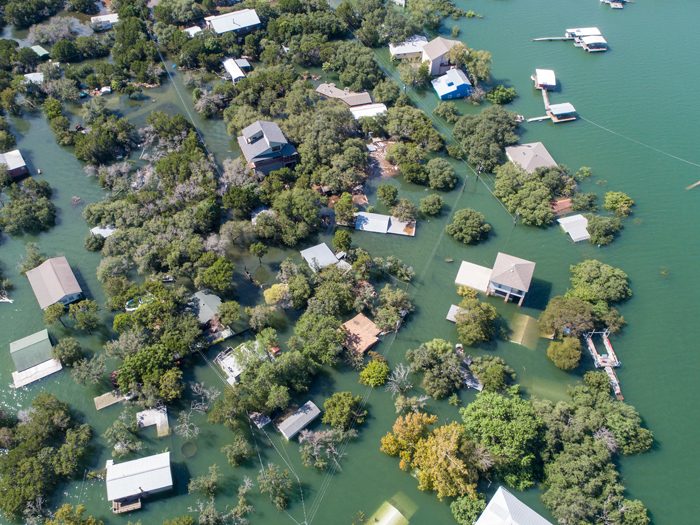When Are We Going to Stop Building in Flood Plains?

Late in 2018 the lame-duck Congress reauthorized another six-month extension of the National Flood Insurance Program (NFIP). There is widespread agreement that the program badly needs reform because it allows rebuilding on sites that suffer repeated losses, but there is no consensus on the details of reform.
A few days later the Federal Emergency Management Administration (FEMA) said that NFIP appropriations had lapsed as a result of the administration’s shutdown of government. Claims would be paid but new policies would not be sold. By the beginning of the new year, under pressure from Congress and business groups, FEMA began writing again. Underwriters and brokers are on the record as eager to write flood insurance, but cannot compete with subsidized federal coverage.
In the wake of devastating and deadly wildfires in the West, rebuilding is also being rethought in areas prone to fire and earthquake. Underwriters have more leverage in those cases, but need support from zoning and building codes.
While the NFIP reform soap opera continues into the new Congress, there is only so much that the insurance sector can do directly. “The insurance fix would be considerably higher rates for high-risk properties, and simply declining to insure those with a history of repeated losses, simply out of book,” said James Lynch, chief actuary and vice president of research and education at the Insurance Information Institute (III). “But the politics don’t support that.”
Several underwriters and brokers contacted declined to comment for this story, as did the Insurance Institute for Business & Home Safety.
The record is “full of tales of woe about multiple payments and multiple coverage for the same properties,” Lynch said. “NFIP has taken some steps to purchase properties that have repeated claims, that is something of a trend, but it has been very difficult for them to do given levels of funding. Most states have beach and wind plans, but again that is a political issue, not an insurance issue on things like setting rates.”
The new trend, Lynch stated, “is a greater eagerness on the part of insurers to ensure that property owners are aware of climate change and increasing frequency of extreme weather. Insurance provides financial resilience; the industry also wants to make properties more physically resilient. There is also greater overall awareness and activism in communities.”
A case in point is Charleston, S.C., the historic port city and regional center where Chris DeScherer, managing attorney for the Southern Environmental Law Center lives and works. “The pressure to develop here is intense. We recently saw a permit application where the developer wants to fill in literally hundreds of acres of wetlands. That is remarkable given the storm history of this area.”
DeScherer added that the mayor of Charleston has called storms and flooding the most important threat to the city.
He also noted a potentially influential new factor in development and rebuilding: liability. “Development in vulnerable areas such as wetlands or floodplains exacerbates flooding for nearby areas that are already developed. In and around Houston there have been lawsuits brought by existing subdivisions against new subdivisions claiming the way the new development handled storm water worsened flooding in the existing developments.”
Lynch, at III, said he was not familiar with liability as an issue in development or rebuilding, and could not comment on any specific situation or dispute. He did add, however, “if you pave over a large area that can’t absorb water any more, that creates more run off. That is simply the way flooding works.”











